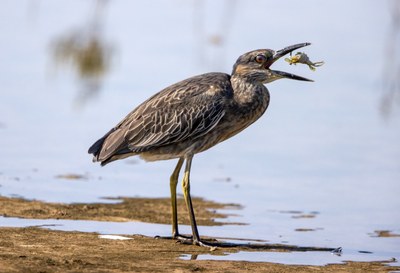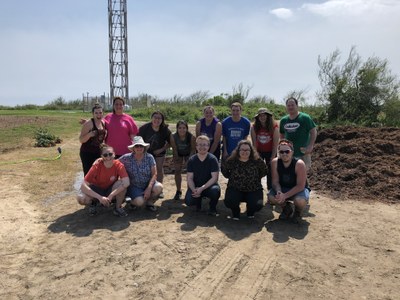Surfside Beach: Bird City Texas Certified Community
Learn more about the excellent work being done in Surfside Beach to involve their community, improve habitat, and create safer spaces for birds. Below you will find some details about Surfside Beach as well as a few examples of the local bird-friendly initiatives they have implemented that led to their Bird City Texas official certification. This list is not exhaustive but hopefully helps give insight on what local communities are doing to support birds and the spaces where they live. We hope these examples help you discover ways your community can work to protect birds and their habitat where you live.
Details
| Population: | 602 |
|---|---|
| Acres of Parkland: | 2,200 |
| Dates of certification: | 2021-2023 |
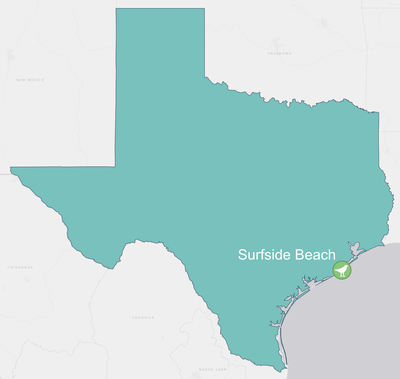
Community Engagement
"Small but mighty" is a good way to summarize the Village of Surfside Beach. This is a community passionate about birds, people, and connecting the two through engagement opportunities such as their beautiful Surfside Bird and Butterfly Trail, packed with native plants and donated benches so you can soak up some sunshine while making observations in eBird and iNaturalist! In the age of COVID, Surfside committed to maintaining their engagement opportunities by bringing their speaker series into an online format via Zoom, and sharing via their “Surfside Beach TX Nature Lovers" Facebook page.
Habitat Enhancement and Protection
Like many coastal communities in Texas, Surfside has seen the impacts of rising seas and powerful hurricanes. They are fighting back with native plants and protected green spaces, which in turn protects their community and property. They have dedicated projects to restore the dunes, plant native grasses and flowers along the Crabbing Pier, and add native trees and shrubs to the Canal Road Fishing spot.
Creating Safer Places for Birds
Surfside is creating safer places for birds while creating an environment that welcomes citizens and visitors alike, getting them active and outside. They’re installing more bike racks and walkways, while instituting integrated pest management on community properties. This means there are less car exhaust and chemicals in the air, which is healthier for all animals, including humans.
Want to learn more?
Contact Surfside Beach directly to learn more about what they are doing to protect birds in their community.
Additional Resources
Certification Criteria Commitment
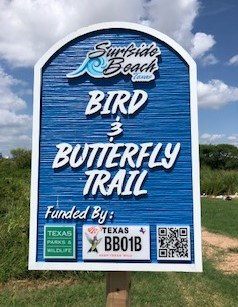
- Bird and Butterfly Trail, Surfside Beach
Certified communities make a three-year commitment to accomplish specific projects, host bird-related events, promote local initiatives, pass bird-friendly ordinances, and more in order to achieve certification. These commitments fall into three categories: Community Engagement, Habitat Enhancement and Protection, and Creating Safe Spaces for Birds. Each category has a minimum requirement of actions a certified community must select. In addition to the example listed above, the Village of Surfside Beach has also committed to complete the following actions for each of the three categories.
Category 1: Community Engagement Criteria (5 required)
- Participates in at least one community science program annually
- Create bird watching amenities in public parks
- Host at least one native plant sale with high emphasis on native plants (at least 75% native plants available)
- Host 3 community volunteer planting events per year
- Public parks have signage that prioritizes bird ID and native bird ecology in their message
- Quarterly column/outreach/social media outreach centered on native birds
- Speaker/workshop series focusing on birds, wildlife, habitat, environmental stewardship. Minimum 3/year
- Annual bird festival that promotes community stewardship and appreciation of native birds and their habitats
Category 2: Habitat Enhancement and Protection Criteria (8 required)
- Develop and implement bird-centric wildlife management plan(s)
- Modify and improve existing habitat for birds, wildlife, and native plant communities
- Incentivize local habitat enhancement/restoration programs
- Adopt native-only recommended list for all new business and residential developments
- Implement an active invasive plant species removal program on public lands
- Implement seasonal management practices that protect nesting birds
- Manage natural areas to encourage wildlife habitat, including “No Mow” areas for native plants
- Sponsor at least 5 habitat restoration projects of at least 1 acre in size in the community
- Conduct inventory of city lands to document plant and animal species and assesses habitat quality
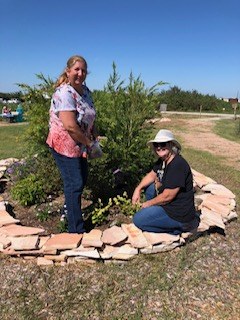
- Native plant garden installation, Surfside Beach

Category 3: Creating Safer Spaces for Birds Criteria (4 required)
- Participate in National Lights Out Program
- Implement strategies to minimize use of pesticides and herbicides on city-managed property
- Provide alternative transportation throughout the community (hike/bike trails, rideshares, bike lanes)
- Prohibit feeding of ducks on community-managed properties
